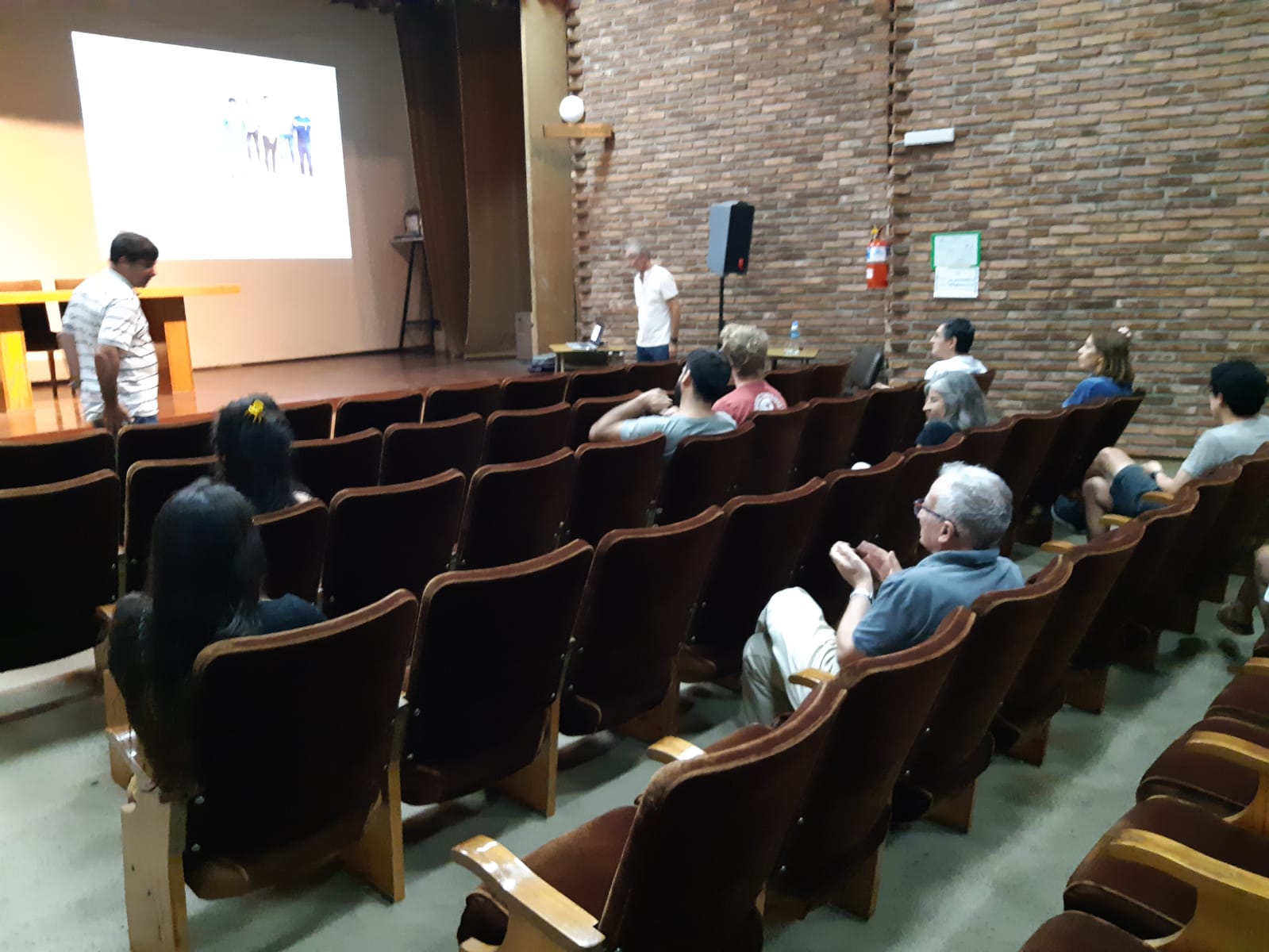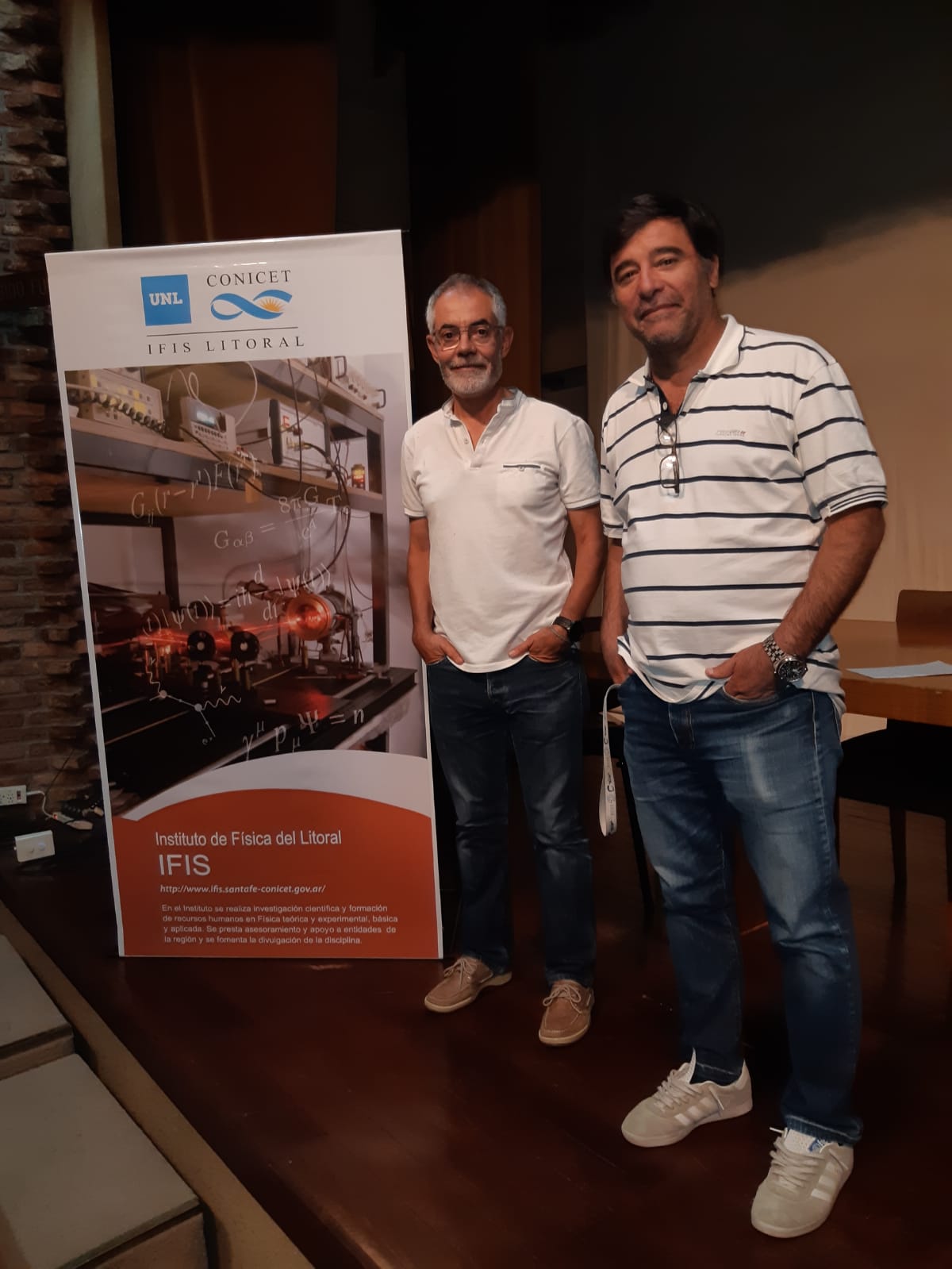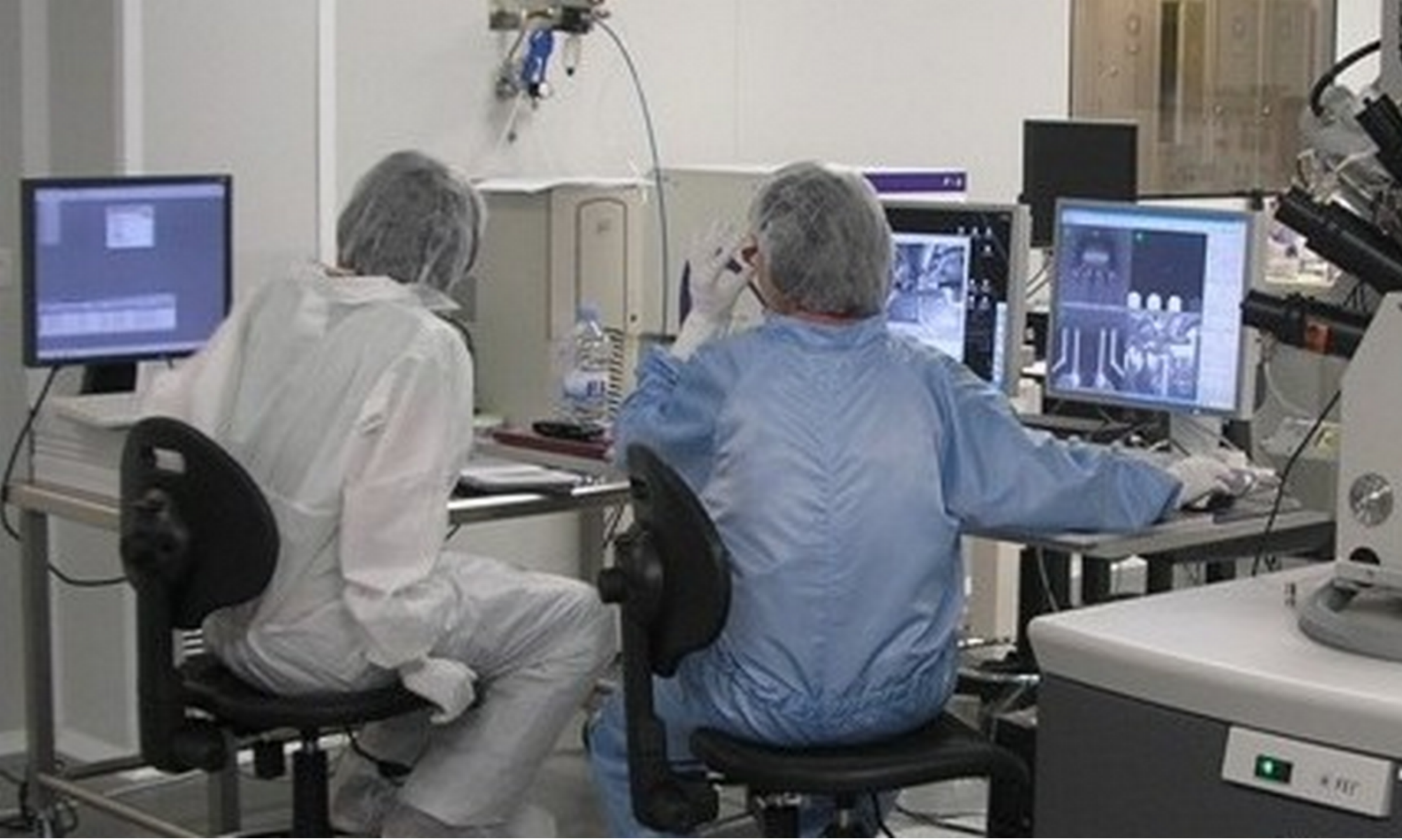Friday, December 16, at 11 a.m. Buenos Aires Time, Prof. Dr José Santiso gave a seminar entitled “Strain effects in vanadium dioxide films with the metal-insulator electronic transition” at “Laboratorio de Física de Superficies e Interfaces”, Instituto de Física del Litoral (IFIS-Litoral, CONICET-UNL).
José Santiso is a researcher at the Catalan Institute of Nanoscience and Nanotechnology (ICN2) in Barcelona, Spain. Dr Santiso, invited by Dr Mario C. G. Passeggih is part of the ULTIMATE-I (Ultra Thin Magneto Thermal Sensoring) project supported by the European Union.


The following is a brief summary.
Vanadium dioxide (VO2)is an archetypical material showing a metal-insulator (M-I) Mott transition at about T=68C with several orders of magnitude change in the resistivity between the semiconducting low-T M1 phase and the high-T metallic rutile R phase. It has been proposed as a good candidate directly for Resistive-Random Access Memory (RRAM) devices or as complementary selector in combination of a bipolar RRAM device because of its high on/off ratio, fast switching speed and high current density. Although in bulk form the transition is above room temperature either chemical doping or mechanical strain have been demonstrated to bring the transition closer or even below room temperature making it very attractive in different devices. This work studies the structure features across transition of high quality strained epitaxial VO2 films deposited on isostructural rutile TiO2 (001) single crystals. Since M-I transition in VO2 is accompanied by a structural change between monoclinic M1 phase and tetragonal R phase, with substantial variation in cell parameters, the nucleation of the high-T R phase embedded in the low-T M1 phase during transition, is expected to generate local interfacial regions with a large strain. The characterization of the structural features of the films by means of synchrotron X-ray Diffraction upon thermal cycles revealed the formation of local strain effects during the phase transition in competition with the epitaxial strain induced by the growth on the mismatched TiO2 substrates. Such interphase regions between M1 and R crystal domains are submitted to a uniaxial strain (overlapped to the biaxial in-plane epitaxial strain) that stabilizes other polytypic VO2 insulating phases (monoclinic M2, and triclinic transitional M3 or T phase) beyond their expected stability regions.[1] Concomitant to the subtle structural distortions a slight rotation of the monoclinic crystal domains occurs to accommodate the elastic energy constraints. The persistence of the coexistence of those polytypic phases even at room temperature turns VO2 into a complex heterogeneous material. Nonetheless, at conditions where XRD of the films seems to indicate a pure rutile R phase, HRTEM analysis revealed a certain degree of heterogeneity at the nanoscale forming an intricate tweed pattern of other polytypes with different arrangements of V-V dimers along the c-axis direction [2], still displaying a metallic character. Altogether these observations evidence that VO2 micro and nanostructure, and therefore its electrical response, depends on a subtle balance of unconventional strain relaxation mechanisms.
[1] L. Rodríguez, F. Sandiumenge, C. Frontera, J.M. Caicedo, J. Padilla, G. Catalán, J. Santiso, Strong strain gradients and phase coexistence at the metal-insulator transition in VO2 epitaxial films, Acta Mater. 220 (2021) 117336.
[2] F. Sandiumenge, L. Rodríguez, M. Pruneda, C. Magén, J. Santiso, G. Catalan, Metallic Diluted Dimerization in VO2 Tweeds, Adv. Mater. 33 (2021) 2004374.

